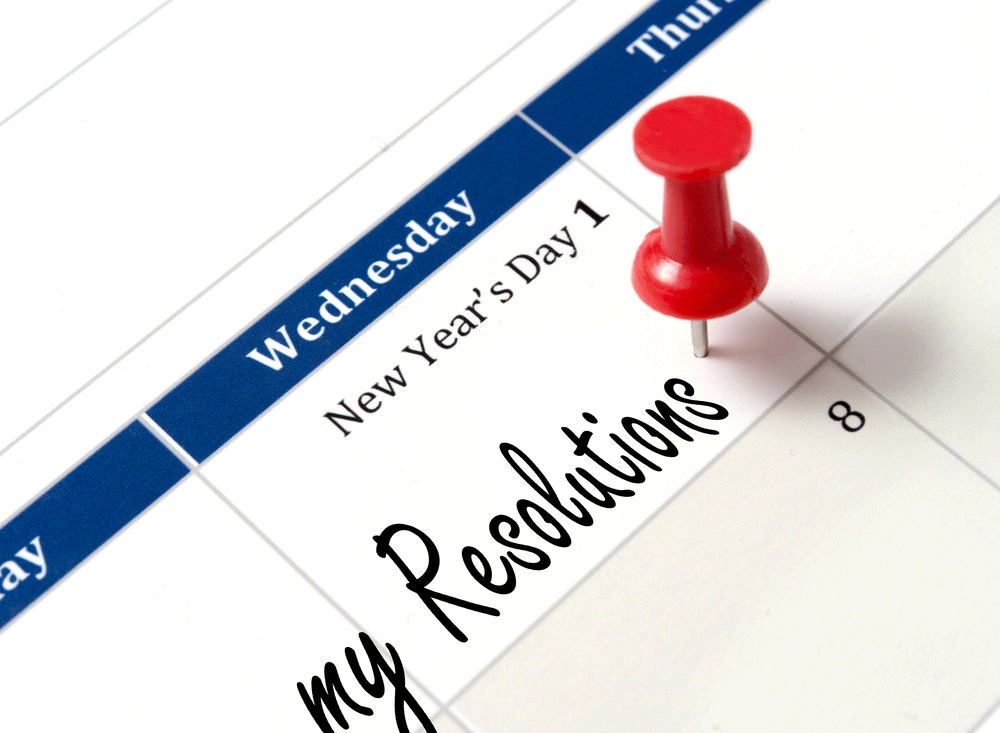
The start of the New Year brings with it a whirlwind of challenges and opportunities waiting for people to conquer and seize them. Along with everyone else, I’m hardly one to shy away from making a new year’s resolution. Over the years, those lofty goals of eating right, losing weight, traveling the world and sleeping more have reverberated the back of my mind, and then, like the repercussions of a crash diet, they have taken a fatal toll, dying a slow and painful death at the end of January. That said, I made the conscious decision to scale back on some of my resolutions, focus on how I’m going to achieve those goals and deliver. Inspired by Gretchen Rubin’s best-selling book, Better Than Before: What I Learned About Making and Breaking Habits I’m concentrating my attention on forming good work habits and making them stick.
Habits make change possible by freeing us from decision making and from using self-control.
Why Form Good Habits?
“Habits make change possible by freeing us from decision making and from using self-control,” says Rubin. And by relieving the added effort of making a decision or exercising self-control, people can set themselves up for success just by doing what it is that they were set out to do or not do. Because you no longer have to waver back and forth, and partake in internal debates within your mind, you’ll be able to focus your energy on the performance of that habit and reallocate any of that extra time spent wavering to something else.
Forming good habits and breaking away from bad ones comes with the concentrated effort of putting together a strategy or a game plan, committing to a change and following through on each of the steps required to achieve that goal. It involves being self-aware and having the discipline to exercise controlled behavior and measure success. More often than none, I’ve sketched ideas out on paper, plotted out reminders in my calendar and utilized my journal as a soundboard only to scratch out those ideas, dismiss those reminders and bury my journal. I’ve tried and failed countless times, but the key takeaway is that failure stems new learnings.
Forming good habits and breaking away from bad ones comes with the concentrated effort of putting together a strategy or a game plan, committing to a change and following through on each of the steps required to achieve that goal. Click To TweetAn important part of learning to form good habits not only includes focusing on specific work habits, but it also involves focusing on the ‘how’ and simplifying the action plan to achieve them. Getting caught up with the strategy and tactics to achieve the resolution can be taxing and detract from the resolution itself especially if you have multiple ways of trying to motivate yourself to achieve them. And remember, forming a habit means making a change that frees us from decision making. Thus, instead of cycling through all the ways of how to get things done, I decided to stick with just one, the “Strategy of Pairs” from Rubin’s Pillars of Habits (Rubin 51).
The Significance of Two and Why the Strategy of Pairs
Two is a good number. It’s a likeable number. It’s simple and easy to remember. If you give someone a list of either two or ten things, most people would rather choose two. It’s a prime number, but it isn’t a lonely number. In fact, many people say two is better than one. Relationships happen in pairs and marriages bind two people together. Two is a complementary number. Oftentimes, one is not enough and three may be too many, but two is just right. For instance, you can’t just have one bite of a cookie without having another. Two bites. And it goes without saying, two desserts are always better than one. Two is the way to go. When you want to offset one thing with another, you choose to handle it in pairs. And everything is always better in pairs. For all of these reasons, I chose the number two, Rubin’s Strategy of Pairs. The Strategy of Pairs focuses on coupling two activities together: one that you want or need to do with one that you don’t particularly want to do (Rubin 193). The idea of pairing two activities together provides balance and stability. It counterbalances the activity you need to do with the activity you need to develop, and it’s an effective way to strengthen good habits while minimizing bad habits.
Applying the Strategy of Pairs
The start of the year brings an unspeakable amount of growth, opportunity and new business that is sure to raise your caffeine level to new heights. With last year’s projects flowing into this year’s and new accounts stacking up one behind the other, work is plentiful. Oftentimes, when I head to the office, it’s rare that I can make a beeline to my desk without someone stopping me for some sort of request. It’s times like these when you need to find ways to juggle your workload to get out of ‘survival mode,’ re-examine how you are getting things done and find ways to gain efficiencies so you can move on to the next big thing. Applying the Strategy of Pairs has been instrumental in helping to create workplace behaviors that complement one another and enhance my work routine and habits.

Meeting and agenda. We all have a number of meetings on our calendar and by the end of the day, you’re asking yourself, where did the time go? While we are required to attend these meetings, there are ways to facilitate the requests by putting together an agenda. It sounds easy and logical, but the majority of calendar invites don’t include agendas. We’re not talking about a fully blown agenda (those are certainly appreciated), but taking the time to jot down names, topics and timetables will prepare your participants and attendees, and give them a reason to join your meeting.
Current status and next steps. How many hours have your poured into providing the status of your project and listening to others only to realize that the status has not changed from week to week? The answer is too many in most cases. When a team members gives the current status, make sure they pair it with the next steps and tangible results that will move the needle forward.
Do and done lists. If you’re a list person like me, then you’ve probably created your fair share of to do lists – never-ending to do lists. Those can get pretty lengthy and somewhat daunting if you don’t realize your end goal and what it is you’re trying to achievements. Creating a done list is not only therapeutic, but it’s impactful and it’ll help you recognize what those check marks mean and how it ties to your performance. And when it comes time to list your accomplishments during your annual performance reviews, you’ll have those documented and handy to lift onto your self-evaluation.
Pre- and Post-mortems. Most of us are all too familiar with conducting post-mortems at the end of a project. But have you considered starting a project with a pre-mortem? Applying lessons learned from your previous project can be effective to set the stage for your upcoming project and align your team by giving them clear guide posts to navigate what’s to come.
Most of us are all too familiar with conducting post-mortems at the end of a project. But have you considered starting a project with a pre-mortem? Click To TweetWhile many of these work habits may already seem rational and part of a fundamental routine, you’d be surprised at how often these are actually carried out. I’m one to admit that I’ve been a culprit of failing to follow through on a handful of these every now and then, which is why I’m making it my New Year’s resolution to pair these two ideas together. It’s sort of like ingraining a buzz word into your mind. When one of these buzz words or ideas pop into the picture, it should automatically call upon the other and develop itself into a work habit. By making these Strategy of Pairs part of my work routine and habit, I’m hoping the end result will help me form good work habits that stick, gain workplace efficiencies to gain a little more breathing room and work smart to allocate time to bigger and better things. What are your New Year’s resolutions and how can you apply the Strategy of Pairs to your work routine?






Follow Me